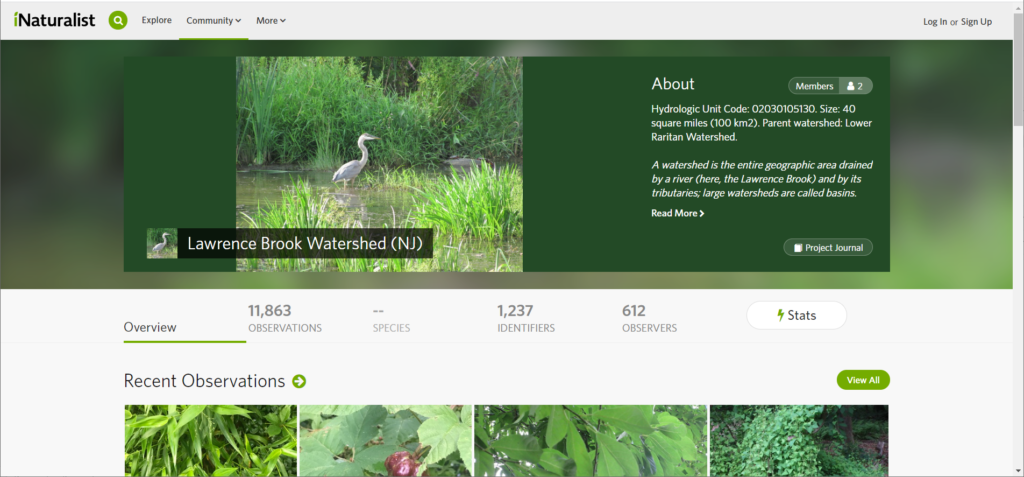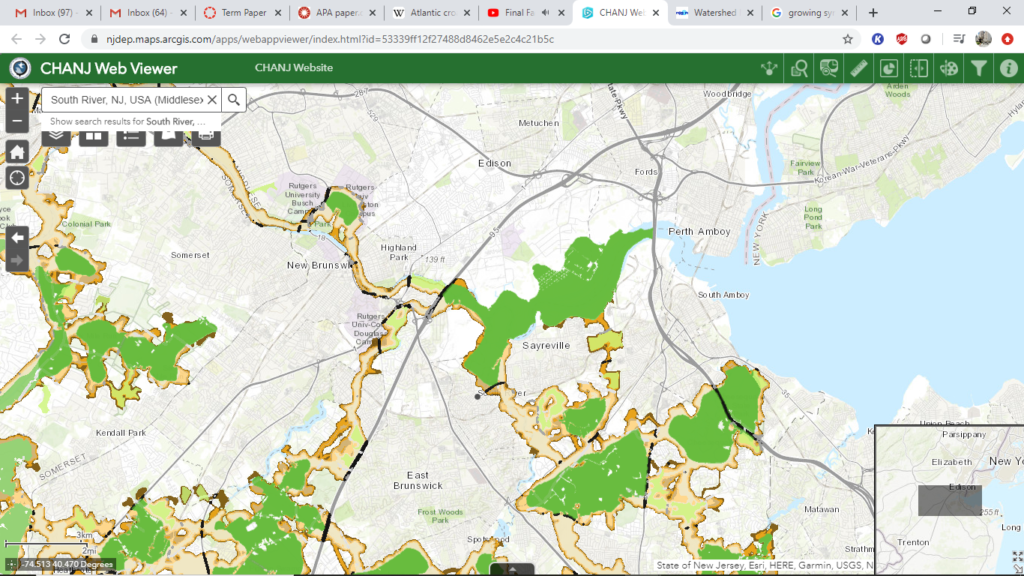Shaping Our Urban Environments: Stepping Stones to Habitat Connectivity
Emily Koai, LRWP Raritan Scholar Intern Spring 2020
New Jersey’s habitat faces significant barriers due to an expanding urban landscape. Ecosystems of interdependent flora and fauna are interrupted by the hustle and bustle of high-volume traffic and concrete, man-made passages of culverts. This juxtaposition gives us pause to reflect on what can be done to help wildlife connect to their habitats across our built environment. We are prompted consider our urban landscape and promote connectivity between our natural spaces and to improve and enhance the relationship between our natural environment and our urban communities.
Originally scheduled for March 16th, the LRWP’s much anticipated habitat connectivity workshop was held virtually on May 4. Many thanks to our partners – Middlesex County Office of Planning, NJDEP, and NY/NJ Harbor Estuary – for persevering and helping us bring these tools and knowledge to participants via a virtual platform! A video of Mr. Zarate’s presentation is now on youtube.
Working with tools shared during the workshop, our friend Herve Barrier created an inaturalist project for the Lawrence Brook subwatershed. Herve explains: “I copied the borders, street by street, using the CHANJ map, after selecting only the ‘watershed’ layer. I am working to make it more and more precise.” Feel free to add your own observations to the growing tally of almost 12,000 observations in the Lawrence Brook sub-watershed! Interested in starting an inaturalist page for another sub-watershed of our Lower Raritan? Let us know!

Webinar Recap
To kick things off, Isabelle Stinnette explained how she and her team from the NY/NJ Harbor Estuary Program set out to explore potential passages for our diadromous and potadromous fish friends through their Aquatic Connectivity Through Climate-Ready Infrastructure Project. What they found were tens of culverts and barriers in the Lower Raritan that obstruct the passability for aquatic wildlife. Blocked up by debris and soil, many of these sites have the potential to be opened up or mitigated into effective passages, a sentiment that excited volunteers. This project uses the North Atlantic Connectivity Collaborative protocols (www.naacc.org) in concert with a hydraulic model to make recommendations for connectivity restoration in New Jersey watersheds.
To help illustrate the potential for these obstructed passageways, Brian Zarate, along with Gretchen Fowles, the originator of CHANJ (Connecting Habitat Across New Jersey), helped bring habitat connectivity to our screens. Launched in 2019, CHANJ provides innovative tools that map out natural land cover in relation to our urban environments and further guidance “to help prioritize land protection, inform habitat restoration and management, and guide mitigation of road barrier effects on wildlife and their habitats”. Layer by layer, the mapping tool reveals the islands of greenery our wildlife seek refuge in and, connecting them, corridors or stepping stones, pit stops for our terrestrial friends. With ease of access to information about each core, recommendations, and even NAACC protocols utilized by Isabelle and her team, the tools of CHANJ bring us closer to our goal of habitat connectivity.

We are now presented with an opportunity to consider fish ladders, debris removal, and underpasses to help aid wildlife carry out their natural life cycles. The branch now extends to our municipal partners, counties, and DoTs to consider this opening to administer changes that will help build bridges across built environments for our wildlife
Indicative of urban sprawl, the visible islands for wildlife now have evolving needs for preservation. Whittled down to beige and green corridors and stepping stones on our screens, CHANJ and the work of the HEP gives us the means to see opportunities for connections between our natural and built environments. Wildlife have had to adapt to their altered environments as development slowly engulfed their living quarters. With green islands surrounded by the liveliness that is our urban environment, our role as stewards now extends to the advocation of habitat connectivity to help enhance our relationship between our natural environments and urban communities.
Whether on the statewide, local, or backyard scale, CHANJ can help us to visualize our place in New Jersey’s habitat connectivity puzzle and to take steps to preserve and restore important linkages for wildlife across the landscape.
Not sure where to begin? Don’t sweat, the CHANJ Mapping Tutorial will walk you through it! This step-by-step video shows you how to use our online interactive CHANJ Web Viewer (mapping tool), so you’ll be up to cruising speed in about 10 minutes.
Want to learn more about habitat connectivity in New Jersey? See PBS’s Eco Sense for Living’s “Wild Crossings” special feature highlighting local habitat connectivity work.
